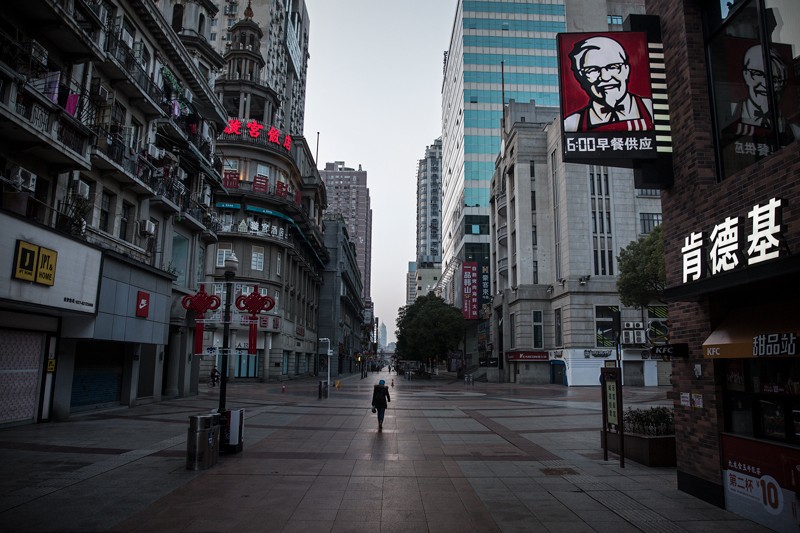Fri 24 April 2020:
Life isn’t going back to normal anytime soon, but public health and government leaders now have a better understanding of how to lift lockdowns in a way that minimizes the threat of a new wave of global casualties.
International experts agree that global social distancing appears to work in the fight against coronavirus, and easing the measures too soon could lead to a disastrous second wave.
But the world can’t stay shut forever. At some point, the restrictions will need to be eased to oil the wheels of the economy and shake society back to life.
Scale up rapid testing
Until there is enough testing, it’s impossible to know where and how the virus is spreading.
In America, a test that provides results in less than 15 minutes is now available in some hospitals and doctor’s offices. The company that produces it, Abbott, says it is able to provide about 50,000 tests per day. It runs on the same platform that doctors use to do in-surgery flu tests. This kind of testing is vital to understanding the breadth of the issue.
The UAE, which has been praised globally for its handling of the coronavirus crisis, has increased its COVID-19 testing rate to about one in ten people, a government spokesperson said on Wednesday.
The country has opened government drive-thru test centers across the country and is focused on making testing widely available to all those who need it, the spokesperson said.
However, countries like the UK have lagged on testing and consequently have seen COVID-19 cases surge.
Nations like Germany and South Korea have tested far more widely by rapidly stockpiling kits and making the test available to a larger number of labs.
Increase contact tracing capacity
By tracking and communicating with the contacts of a confirmed COVID-19 case who are themselves at risk for infection, health workers can dramatically slow the chain of transmission. However, it’s a huge, labor-intensive undertaking.
In the US alone, the country may need 100,000 contact tracers, which would cost an estimated $3.6 billion, according to analysis by the Johns Hopkins Center for Health Security.
Contact tracing is a process in which trained staff interview people who have been diagnosed with a contagious disease to find out who they may have recently been in contact with. Then, they tell those people they may have been exposed so they can self-isolate to prevent further spreading.
Visit our dedicated coronavirus site here for all the latest updates.
“Contact tracing, it’s having a moment of glory right now with COVID[-19] because of the crucial importance of identifying those individuals who have been exposed quickly and isolating or quarantining them,” Dr. Laura Breeher, medical director of occupational health services at the Mayo Clinic told TIME.
However, because it’s such a massive job, contact tracing will likely go high-tech. Google and Apple are working on a new system to develop apps for contact tracing, but these apps are still in development, so even this route will take some time.
Isolate the sick
Once the contacts of COVID-19 patients are traced, many will need to separate themselves from society for two weeks to ensure they are not infectious. However, there needs to be a structure in place to make that possible.
“Part of a complete strategy for quarantine is that you provide places apart from the home and community where those who’ve been exposed can — in a comfortable setting — spend the time of their quarantine where they are not going to infect others,” Dr. Harvey Fineberg, a health policy researcher at the Harvard T.H. Chan School of Public Health told American radio network NPR.
Beef up hospitals and the PPE supply chain
Medical staff all over the world are still struggling to source many essential supplies to allow them to serve a surge of patients.
Hospitals need to increasw their intensive care unit and ventilator capacity to care for critically ill COVID-19 patients.
What’s more, national supplies of personal protective equipment (PPE) need to be stabilized so that healthcare workers can protect themselves from infection.
The UK, in particular, has been criticized for its mishandling of the PPE supply chain, with many hospitals reportedly close to running out of critical equipment and doctors forced to choose between exposing themselves to the virus or letting patients die on their watch.
Produce an effective vaccine
The ultimate way to phase out lockdown for good is to produce an effective vaccine.
Despite a normal development time of 18 months or more for a vaccine, an Oxford research team believes large-scale production could be underway as soon as September – about nine months after the novel virus was first found in China.
UK health secretary Matt Hancock said the new trial would begin on Thursday. Speaking at the British government’s daily press briefing Hancock said he is “throwing everything at” the country’s efforts to create a COVID-19 vaccine.
Hancock pledged 20 million pounds of funding for the Oxford project, and 22.5 million pounds for clinical trials of another prototype at Imperial College London.
The UK joins the US, China, and now Germany, which announced clinical tests on Wednesday, in beginning human trials.
In America, the US government has committed to a $1 billion COVID-19 vaccine deal with Johnson&Johnson, co-financing research through the Biomedical Advanced Research and Development Authority (Barda).
It has also been reported that GSK and Sanofi have teamed up to develop a coronavirus treatment, and plan to have a vaccine ready for testing by the end of 2020.
However, David Nabarro, professor of global health at London’s Imperial College, has previously warned that it may never be possible to develop a safe and effective vaccine for the disease, and that humanity may have to “find ways to go about our lives with this virus as a constant threat.”
Hancock conceded, “Nothing about this process is certain. Vaccine development is a matter of trial and error and trial again. That’s the nature of how vaccines are developed.”
Think your friends would be interested? Share this story!






